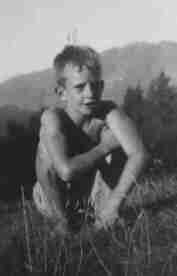I had an email from a very good friend concerning my passing comments back here on minimalist photography. He was kind enough to include a photograph of his own that I would count as being a worthy example.
His communication had the effect of twisting the probligo's tail just a bit. Out of that I have taken yet another run around the traps of the various webpages that google throws up. The exercise has done nothing to change my mind about my original comments. I think I am beginning to get an idea of why that might be so.
I have an image that is similar to that of my friend's; it is misty, it is of a set of mooring poles in the Tamaki estuary at the end of Waipuna Rd. The mist was thick enough that the bridge (an enormous concrete thing)behind is invisible despite being no more than a couple of hundred metres away. I have others that would "qualify"; such as a liquidamber tree seed pod against a brilliantly clear blue sky. (Both are candidates for competition at the club next year). I have posted another example here. That is an idea that is on my list of works in progress; I think it has potential.
The point of difference between much of what I see on the 'Net on the subject, and what I and others (my good friend for example) see as "minimalist" includes one very major factor. It is not difficult to separate subject from background in a photograph; there are a number of different ways of achieving that specific objective.
A very large number of the examples I have seen - and I include in this category my own and my friend's examples - are based upon atmospheric conditions such as mist and/or very long exposure times to get that separation. The second of my examples does not use the "monochrome effect" that comes from low light low contrast scenes but from the opposite; using uniform colour as the "separator".
When you start digging into the "how to" pages though, a somewhat different aspect comes to the fore. Rather than doing the work of separation "in the camera" - working the image and components to achieve the effect of isolation - the process changes to the use of image file processors to "dodge and burn" the required effects.
Now I know that makes no difference between digital and film examples and the comparison (highlighted intentionally with "dodge and burn") between the two is entirely valid.
I still think that the challenge of photography is not just in the capture of the image, but in making the image directly what the taker is seeing. In other words, what the camera retains is the image; it should need no further "processing" to convey its reality to another person. I read someone saying "that if an image requires explanation then it is not a good photograph".
I agree that is a very fine hair to split.
Post -
To return to the topic of labels, I try and take images that interest me. Difficult or snapshot is not the point. The photo at Waipuna was hand-held, 1/80 exposure. That does not make me, nor do I want to be, a photographer who is a "minimalist".
Subscribe to:
Post Comments (Atom)

2 comments:
The secret to any good photograph - digital or silver - is composition. A poorly composed photo is rarely a picture, despite post-processing. We have all sorts of tools available that makes digital photography such that anyone with rudimentary knowledge of picture editing can morph a photo into what they think is a picture (as opposed to a snapshot).
I believe that despite the welter of high technology cameras on the market there are still no more what I would term 'photographers' - i.e. people that can see a picture in the everyday or the mundane.
As has often been pointed out, having a desirable camera in your hands won't suddenly turn you into a photographer unless you have the ability to compose and actually 'see'.
Thus we get around to 'minimilsm'. Sometimes a photo can accidentally be a picture - photo journalists often have to whip a photo off without the chance to compose (the execution of a Viet Cong is an example; also the children running from a napalm attack...the list if huge). But the reality is that the most powerful photographs are well composed and essentially simple in terms of composition. In other words, - and this is my opinion! - just about ALL good photographs are minimalist. And that means that the subject and background are not separated but complement each other artistically; it then follows that the guts of the photographic process is composition. Post processing can reinforce the photo if done well (properly?).
So I guess that what I'm saying in this prolix way is that no amount of ability with Photoshop or its clones will ever turn a sow'a ear into a silk purse.
Composition goes without saying. I wrote on the assumption that the image was something more than a holiday snap.
Your echo of my point that "minimalist" has been degraded to the extent that virtually anything "qualifies" is appreciated.
I don't know that photojournalism could fit the minimalism bill; the emphasis there (and the My Lai photo is a good case in point) is to put an event into context. For that reason alone the "subject" should not be isolated from "background".
I sent my friend a link to my attempt at minimalism here. The idea (as I saw it) of the image was to hint at the trees in the background through the lensing in the water drop. But then a good image should never need explanation...
Post a Comment